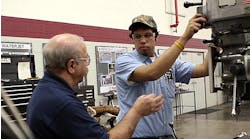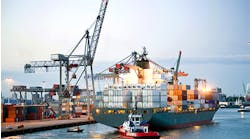Latest from Opinion
Most people agree that an organization’s ability to change over time is critical to its long-term survival. It is widely accepted that it’s necessary to establish an organizational structure to manage change via employee empowerment, lean operating techniques, or continuous improvement — and there are countless theories, methodologies, recommendations, and analyses that aim to maximize the likelihood of successful change. Still, there are too many anecdotes about organizations failing to achieve the transformations they expect, despite sincere efforts to follow restructuring recommendations.
The reality is that if there is to be progress in this area there must be a paradigm shift regarding the dynamics of change and organizational structure, and that shift is possible in a series of steps.
1. Develop and communicate a proper perspective of change in the organization. One of the first things Change Science tells us is that change is constant and continuous, occurring around us on a universal basis. Therefore, it is important for everyone in an organization to recognize this fact, from the board of directors down to individuals in frontline administrative and production positions. Every time a new customer order is received, an engineering drawing is created, a product is produced, an invoice is generated, and the list goes on, a change has occurred within the organization. Therefore, an organization is continuously inundated with change and —assuming that the organization has managed to survive — this change (expected or unexpected) has been successful.
So, Step One is for everyone to stop thinking of change as strictly specific efforts and/or events, and to recognize that the organization is already successfully dealing with a continuous stream of changes at every level.
2. Develop an organization-wide understanding of responsibility. So how does an organization manage all this continuously occurring change? The answer is simple: delegation of responsibility. From the person who pushes the button to start production, to the person who enters the customer orders, and to the manager that resolves a conflict, responsibility for the control of these various changes has been delegated.
Recognizing What Empowerment Is
It is important to recognize that the concept of employee empowerment automatically exists as soon as that individual is given responsibility for managing and controlling the change that has been assigned to them. What is most often lacking is a top-to-bottom organizational recognition of the fact that not only is there a significant degree of change occurring continuously, but through the assignment of responsibility all the employees in the organization are already masters at managing and executing all of that change.
3. Recognize and communicate two broad categories of change within the organization. Given that organizations are already managing and executing a continuous flow of change, why all the discussion about how organizations struggle with change? The answer lies in the fact that organizations have allowed the lines of responsibility between day-to-day operational change and strategic change to be blurred. More important, the lines of responsibility have not only been blurred but it is common that the interrelationship between operational change and strategic change has become disconnected.
Strategic change is both a response to internal opportunities for improvement and a reaction to external influences that can threaten the organization.
Operational change focuses on the short-term, expected and unexpected changes that need to be executed in support of a customer. It is based upon strategic change that has occurred within the organization on a historical basis.
It is critical that everyone in an organization understands that both operational change and strategic change are equally important for the organization’s survival. There needs to be an understanding and an acceptance on the part of all individuals within the organization that operational change must be executed continuously in order to support the customer in real time, while strategic change needs to be executed continuously in order for the organization to survive into the future.
4. Adjust organizational responsibility to clearly support operational and strategic change. Assuming an organization is successful in Steps 1 through 3, it still may face challenges when managing change if there is not a clear delineation of responsibilities for operational and strategic changes. These guidelines will help:
• Drive responsibility for day-to-day operational change as far as possible down the organizational pyramid. Ideally, the more operational change that can be executed and controlled at the administrative and production levels of the organization, the better will be the results. These are the people closest to the operational change and generally they have the greatest ability to address opportunities and issues that may arise.
• There should be a clear understanding at the primary operational level that the management is responsible for ensuring there is ongoing strategic change in the organization, with an objective of long-term improvement and survival of the organization.
However, it is also important to make certain that a communication loop exists to support the delineation of responsibilities. This includes communicating specific details and explanations behind strategic change to those with a primary responsibility for operational change, along with feedback communication to those responsible for strategic change, regarding the effects of strategic change initiatives, and other opportunities for improvements that may exist.
By following these four steps, the formula associated with an organizational structure that will greatly enhance the ability to support the change required for growth and long-term survival is really quite simple. The real challenge lies in executing the paradigm shift that requires a clear understanding by everyone in the organization that change is already constant within the organization, and that a new delineation of responsibility between strategic and operational change is required.











